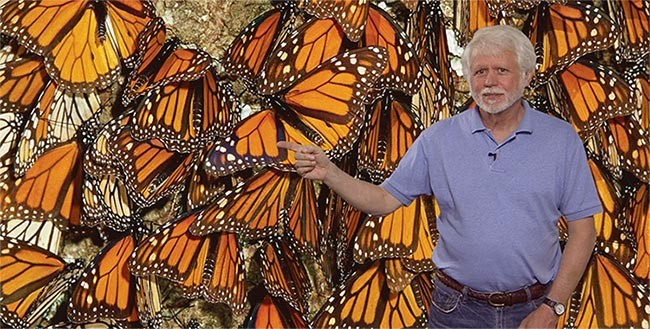
The long, instinctive migration of monarch butterflies from the northern United States and Canada to their wintering grounds in central Mexico is considered one of the natural world’s most remarkable phenomena. Scientists are finally identifying the internal mechanisms that enable these butterflies to determine the direction they must travel and how to remain on track.
A team of researchers led by University of Massachusetts’s Professor Steven Reppert has been trying to solve the mystery of monarch migration for 15 years. First they determined that monarchs use the sun’s position on the horizon and a circadian clock in their antennae to orient themselves in the proper direction for migration.
Repert said that on partly cloudy days they use specialized photoreceptors in their eyes to detect the angle of polarized light from the sky, which their brain uses to interpret the proper direction to fly. And on completely overcast days, they rely more heavily on an internal compass that detects the dip in the Earth’s magnetic field.
So how do monarchs orient themselves for their return journey? Their internal compass system reverses itself. “It’s the cold temperatures at their overwintering site that are essential to reset the mechanism so they fly in the reverse direction,” Reppert said.
“The next thing we wanted to know was how those neural oscillations from the clock cells interact with the oscillations in the butterfly’s compound eye that sense the position of the sun,” said Reppert, who recorded signals from antennae nerves as they transmitted information on sunlight and the time of day from the monarch’s antennae and eyes to its brain.
The team constructed a mathematical model that “provides a starting point to try to understand how the two systems are interacting,” Reppert said. “It’s an aid that we hope will help us get to the point where we can really determine the connections between the clock and skylight cues. But it will be modified as we understand how the actual wiring in the brain works. That’s when we’ll really figure out how it all comes together.”
Reppert believes his method for understanding monarch migration may have implications for studying how other animals navigate, including migrating birds and sea turtles. “The more we know about the biology underlying migration, the better off we’ll be in terms of coming up with rational strategies for conservation,” he said.

